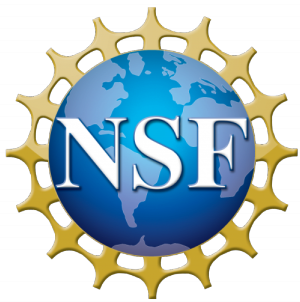November 1st, 2011 - October 31st, 2013 | PROJECT
The University of Pittsburgh's Center for Learning in Out-of-School Environments (UPCLOSE), the Carnegie Museum of Natural History, and the Robotics Institute at Carnegie Mellon University are building an open access cyberlearning infrastructure that employs super high-resolution gigapixel images as a tool to support public understanding, participation, and engagement with science. Networked, gigapixel image technology is an information and communication technology that creates zoomable images that viewers can explore, share, and discuss. The technology presents visual information of scientifically important content in such detail that it can be used to promote both scientific discovery and education. The purpose of the project is to make gigapixel technology accessible and usable for informal science educators and scientists by developing a robotic imaging device and online services for the creation, storage, and sharing of billion-pixel images of scientifically important content that can be analyzed visually. Project personnel are conducting design activities, user studies, and formative evaluation studies to support the development of a gigapan technology platform for demonstration and further prototyping. The project builds on and leverages existing technologies to provide informal science education organizations use of gigapixel technology for the purpose of facilitating three types of activities that promote participatory learning by the public--Public Understanding of Science activities; Public Participation in Scientific Research activities; and Public Engagement in Science activities. The long-terms goals of the work are to (1) create an accessible database of gigapixel images that informal science educators can use to facilitate public-scientist interactions and promote participatory science learning, (2) characterize and demonstrate the affordances of networked gigapixel technologies to support socially-mediated, science-focused cyberlearning experiences, (3) generate knowledge about how gigapixel technology can enable three types of learning interactions between scientists and the public around visual data, and (4) disseminate findings that describe the design, implementation, and evaluation of the gigapixel platform to support participatory science learning. The project\'s long-term strategic impacts include guiding the design of high-resolution images for promoting STEM learning in both informal and formal settings, developing an open educational resource and science communication platform, and informing informal science education professionals about the use and effectiveness of gigapixel images in promoting participatory science learning by the public.
Project Website(s)
(no project website provided)
Project Products
timemachine.gigapan.org
http://www.cmu.edu/events/gigapixel-science/index.html
Gigapixel Cyberinfrastructure for Participatory Science Learning poster
Gigapixel Image Environments for Science Communication & Learning: Macroinvertebrate Digital Teaching Collection Summative Evaluation
Gigapixel Image Environments for Science Communication & Learning: Stories in the Rock Summative Evaluation Report
New Ways of Looking and Learning in Natural History Museums: The Use of Gigapixel Imaging to Bring Science and Publics Together
Stories in the Rock: A Design Case of an Exploreable Image Viewer in a Natural History Museum
Team Members
Marti Louw, Principal Investigator, University of PittsburghCamellia Sanford-Dolly, Evaluator, Rockman et al
Funders
Funding Source: NSF
Funding Program: ISE/AISL
Award Number: 1114476
Funding Amount: 569032
Tags
Audience: Educators | Teachers | Museum | ISE Professionals | Scientists
Discipline: Education and learning science | General STEM | Technology
Resource Type: Project Descriptions
Environment Type: Citizen Science Programs | Games | Simulations | Interactives | Media and Technology | Public Programs

